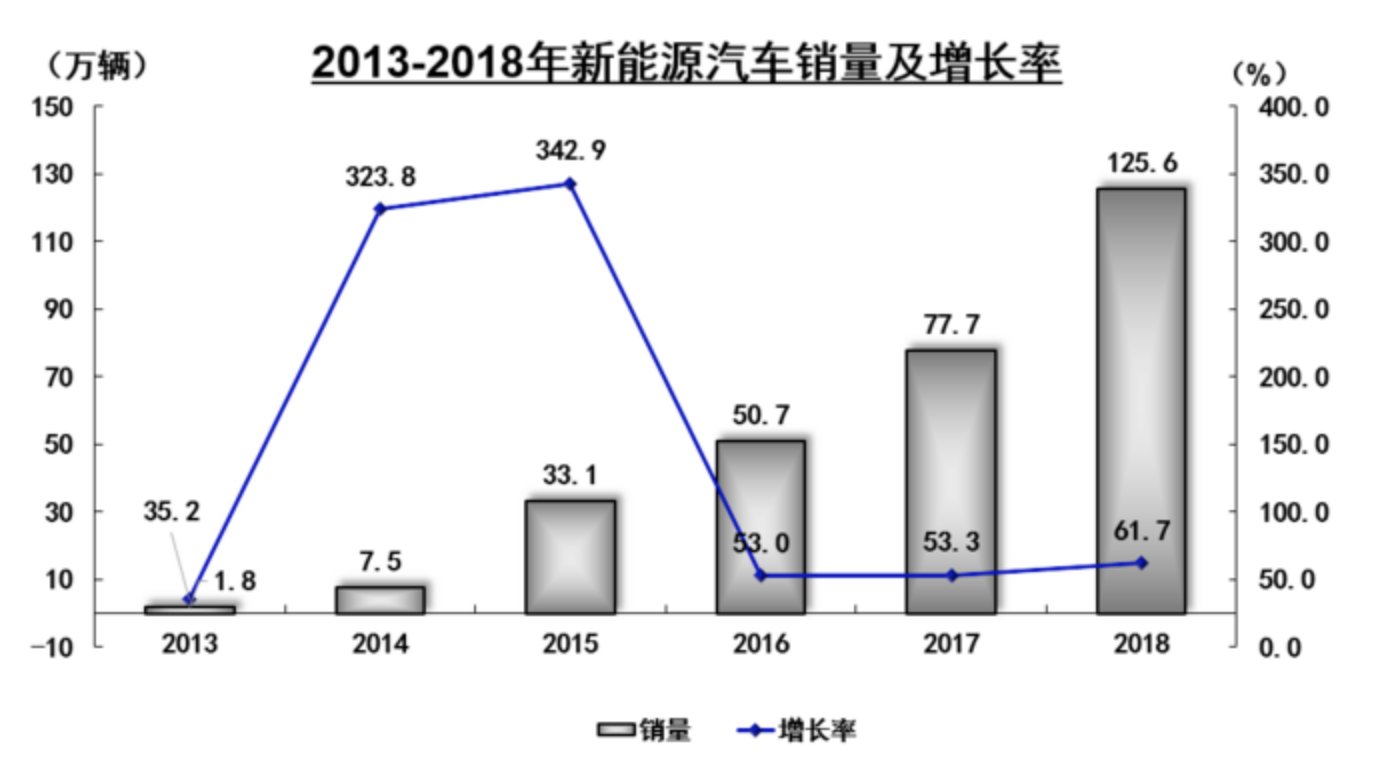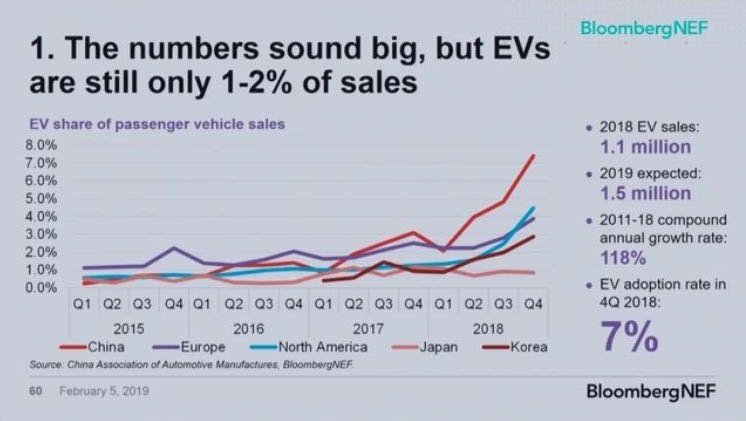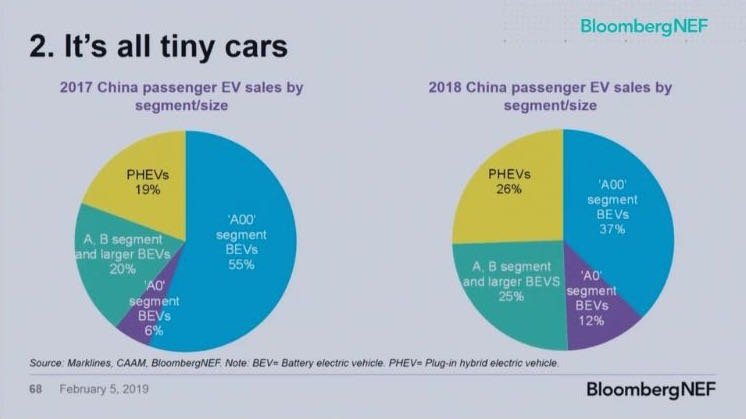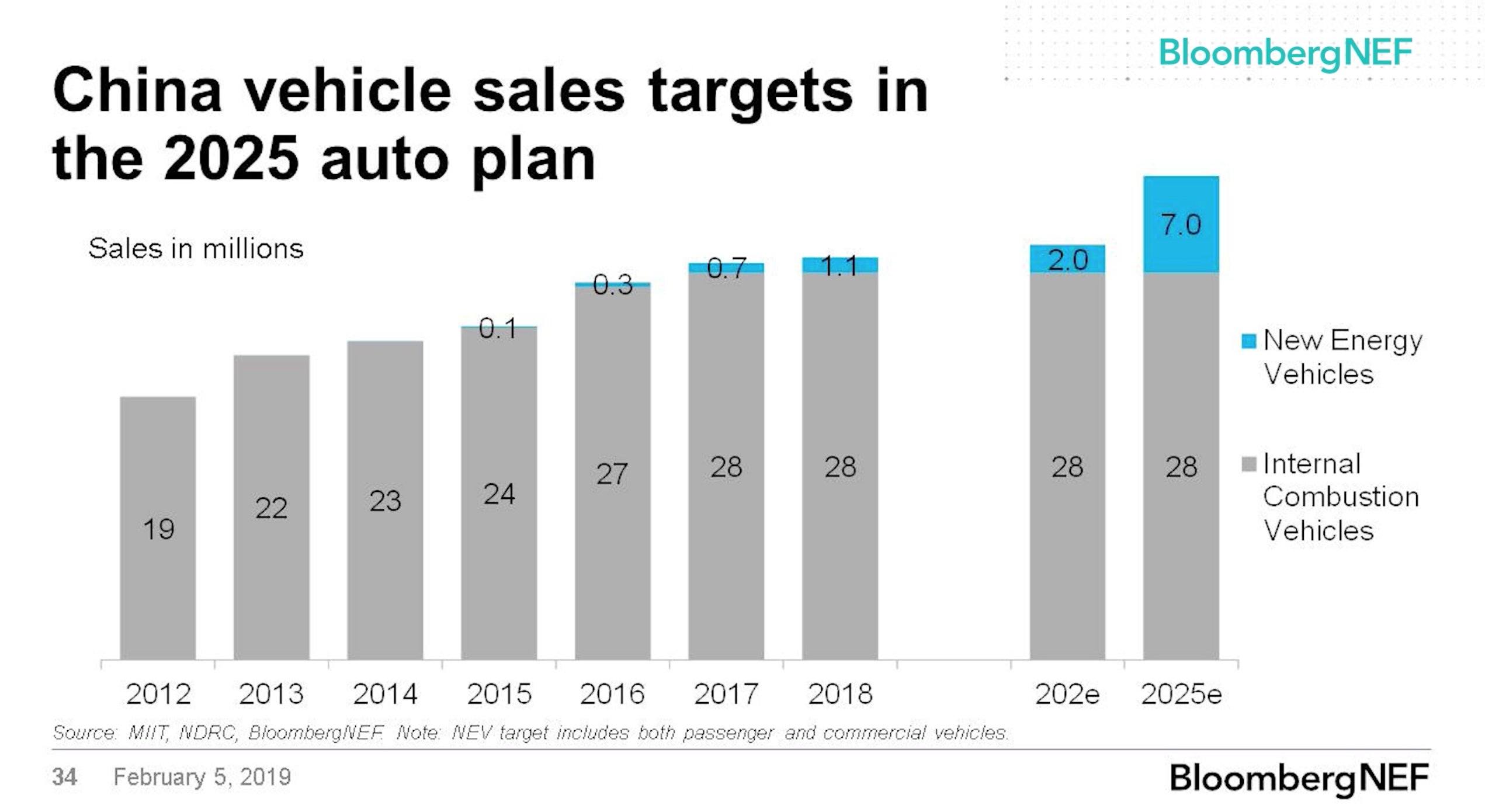This story is Part 1 in a series. Click here to read Part 2, Part 3, Part 4 and Part 5, which cover Chinese EV charging infrastructure, domestic industry policy drivers, leading EV companies and Chinese battery manfacturing.
***
China is the largest electric vehicle market in the world — by a long shot.
According to the China Passenger Car Association, new energy passenger vehicle sales in China totaled 1,016,002 units last year, up 83 percent year-over-year.
Including commercial vehicles, the total jumps to 1,256,000 units. The vast majority of these vehicles are made in China.
The new energy vehicle category includes plug-in hybrid electric vehicles (PHEVs), battery electric vehicles (BEVs) and fuel cell electric vehicles (FCVs). However, FCVs make up a tiny fraction of new energy vehicle sales with fewer than 5,000 of these cars on the road in China today.
China is investing big in electrified transportation to improve air quality in cities, reduce oil imports and mitigate carbon dioxide emissions. But arguably the most important driver is that China sees EVs as good industrial policy.
New energy vehicles are a central part of “Made in China 2025,” an ambitious industrial strategy unveiled in 2015 with the objective of making China a major competitor in several core technology areas. To China, EVs offer a path to dominating the global automotive market, and have attracted strong financial and policy support from top leadership as a result.
EV manufacturing plant data shows China is already pulling in the vast majority of investment. According to Bloomberg New Energy Finance, as of last August, China had 47 plants where EVs were then being made or are planned to be made. At that time, the rest of the world combined had 39.
Chinese firms are also rapidly scaling up lithium-ion battery gigafactories to serve the global EV market.
China’s EV market is simply far too big to ignore.
EV Sales in China

Source: China Passenger Car Association
China to claim half of EV sales in 2019
Like China, the U.S. EV market also had a banner year last year, although sales were relatively small compared to the market leader. EV sales in America totaled 361,307 in 2018 — up 81 percent over 2017 — according to the tracking website Inside EVs. Those sales amount to 2 percent of total U.S. passenger vehicle sales in 2018.
Bloomberg NEF expects global passenger EV sales to reach 2.6 million in 2019. China will claim roughly half of that, with 1.5 million EV sales expected for the year.
Europe is expected to follow with just under 500,000 EV sales. North American sales should rise to roughly 425,000 units. Japan and South Korea should combine for a around 100,000 EV sales this year.
While China is already lapping the competition, 2019 is expected to be a somewhat muted year for EV sales. China’s EV market has been doubling in recent years, but that trend is unlikely to hold, according to Bloomberg NEF. The government is expected to cut subsidies this year by about a third. At the same time, the new energy vehicle quota that kicks in later this year sets relatively modest requirements.
Still, 1.5 million EV sales in a single year is nothing to sneeze at. New car sales in China last year totaled 28 million, and are expected to be roughly the same in 2019. That means EV sales could make up more than 5 percent of overall sales this year.
Colin McKerracher, the head of advanced transport at Bloomberg NEF, dispelled several myths around China’s EV market in a presentation earlier this month — one of them being that EVs currently make up only 1 or 2 percent of the China's total vehicle market. EV adoption actually hit 7 percent of sales in the fourth quarter of 2018.
Global EV Sales

A growing market — and not just in numbers
Another myth is that China’s EV market is made up entirely of small cars. There are a lot of “low-speed EVs” in China, with more than 5 million sold over the past five years, but those cars aren’t included in China’s subsidy program and they’re excluded from official EV sales figures, according to McKerracher.
The traditional passenger EV market does have a lot of smaller-sized vehicles sold in it, but that number is declining. That shift stems largely from the fact that the Chinese government has cut subsidies for the lowest-range EVs, while maintaining them for longer-range vehicles.
Market data shows that sales of the smaller "A00" EV segment shrank last year, while larger plug-ins and plug-in hybrids saw their market share grow.
Passenger EV Sales by Segment/Size

EVs to make up all new vehicle sales growth
There’s policy support for EVs at the city, state and national level in China, all of which play a role in China's ascent to becoming a major EV market player. Looking at the highest level, the government wants all new car sales to be new energy vehicles starting in 2025.
“The Chinese government wants all internal combustion engine sales to flat-line and EVs to make up all new vehicle sales growth,” said McKerracher.
China's 2025 Vehicle Sales Targets

To achieve this, the national government is moving away from direct EV subsidies and toward a broader set of policy tools, including EV mandates, fuel economy rules and carbon dioxide regulations.
Chinese officials have said they’re also conducting “relevant research” on an internal combustion engine ban, which, if enacted, would have a profound impact on the country’s EV market.
Policy is a major EV market driver in China, but it’s not the only one. Declining technology costs are also helping to propel the market forward.
A recent report from McKinsey projects electric passenger cars in Europe will reach cost parity with conventional fuel vehicles by the early 2020s, and that electric passenger trucks will reach cost parity by 2025.
In China, the timing of total cost of ownership parity will be reached “slightly earlier,” according to the report. As EV costs come down, demand is expected to go up.
Increasing private investment
As China's EV market grows, it's also attracting increasing amounts of private investment.
According to an analysis by Reuters, global automakers are planning to invest $300 billion to develop EVs and EV batteries over the next five to 10 years. Roughly half of that — $135 billion — is targeted at China. The greatest portion of that, $45.5 billion, is coming from the Volkswagen/Audi/Porsche alliance.
American automotive brands are also getting in on the action. Tesla recently broke ground on its $2 billion Gigafactory where the company plans to make affordable versions of the Model 3 and yet-to-be-released Model Y vehicles for the greater China market.
General Motors announced earlier this year that it plans to introduce more than 20 new and refreshed vehicle models in China in 2019. The company’s five-year plan is to launch 60 new or refreshed vehicles, including 10 new energy vehicles, from 2016 to 2020.
EV Investment Flows

Source: Reuters
Chinese automakers, meanwhile, are planning to take their products abroad. No Chinese brand has managed to establish itself in the lucrative U.S. market to date. But several companies are now looking to change that.
China's Kandi Technologies announced it plans export its $20,000 mini electric cars to the American market this year. Qiantu Motor, a wholly owned subsidiary of China’s CH-Auto and Mullen Technologies Inc., also plans to enter the U.S. market with the new Qiantu K50 EV, which will start production in 2020.
It may still be too soon to say that China has succeeded in dominating the global EV market, but it is certainly well on its way.